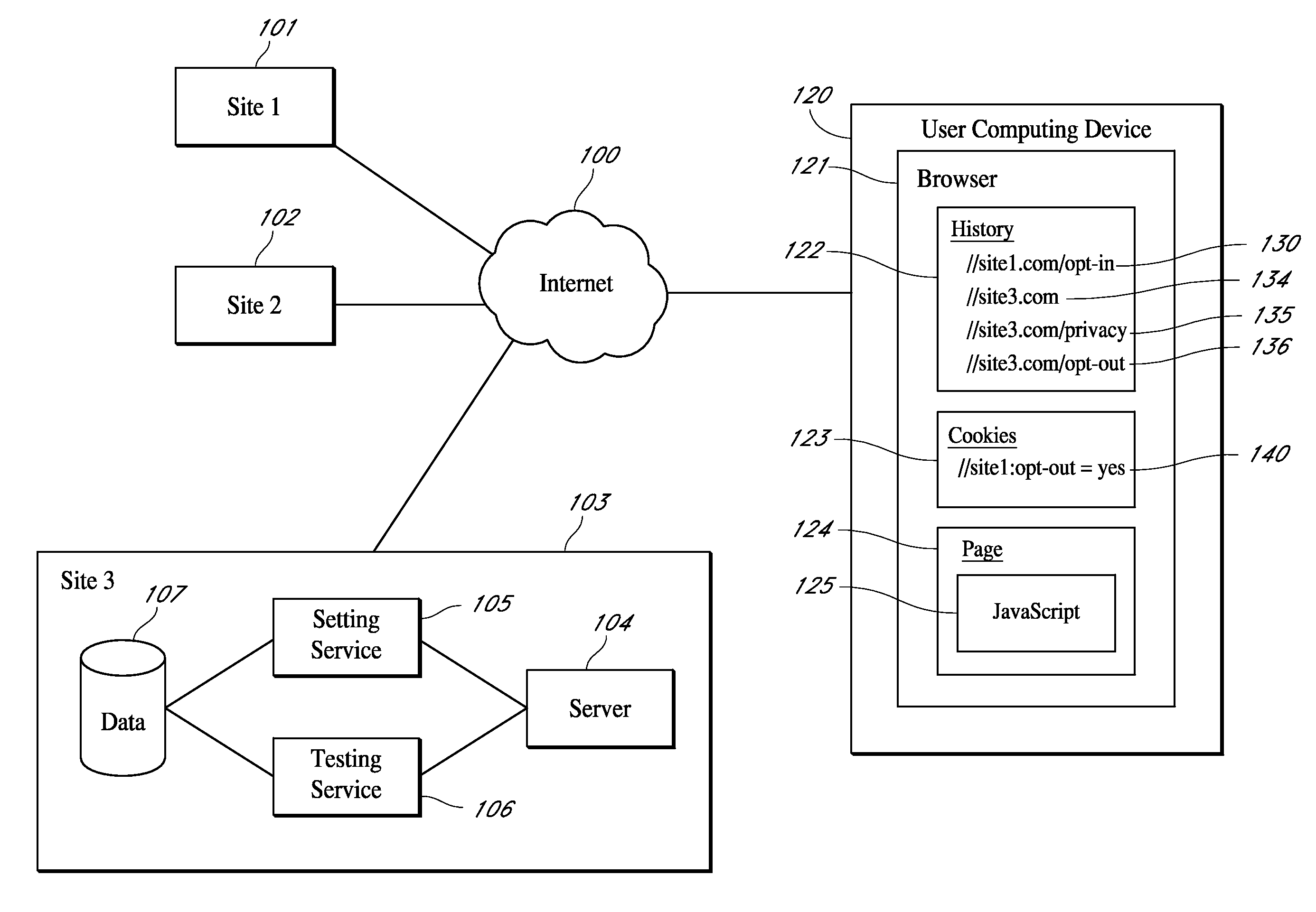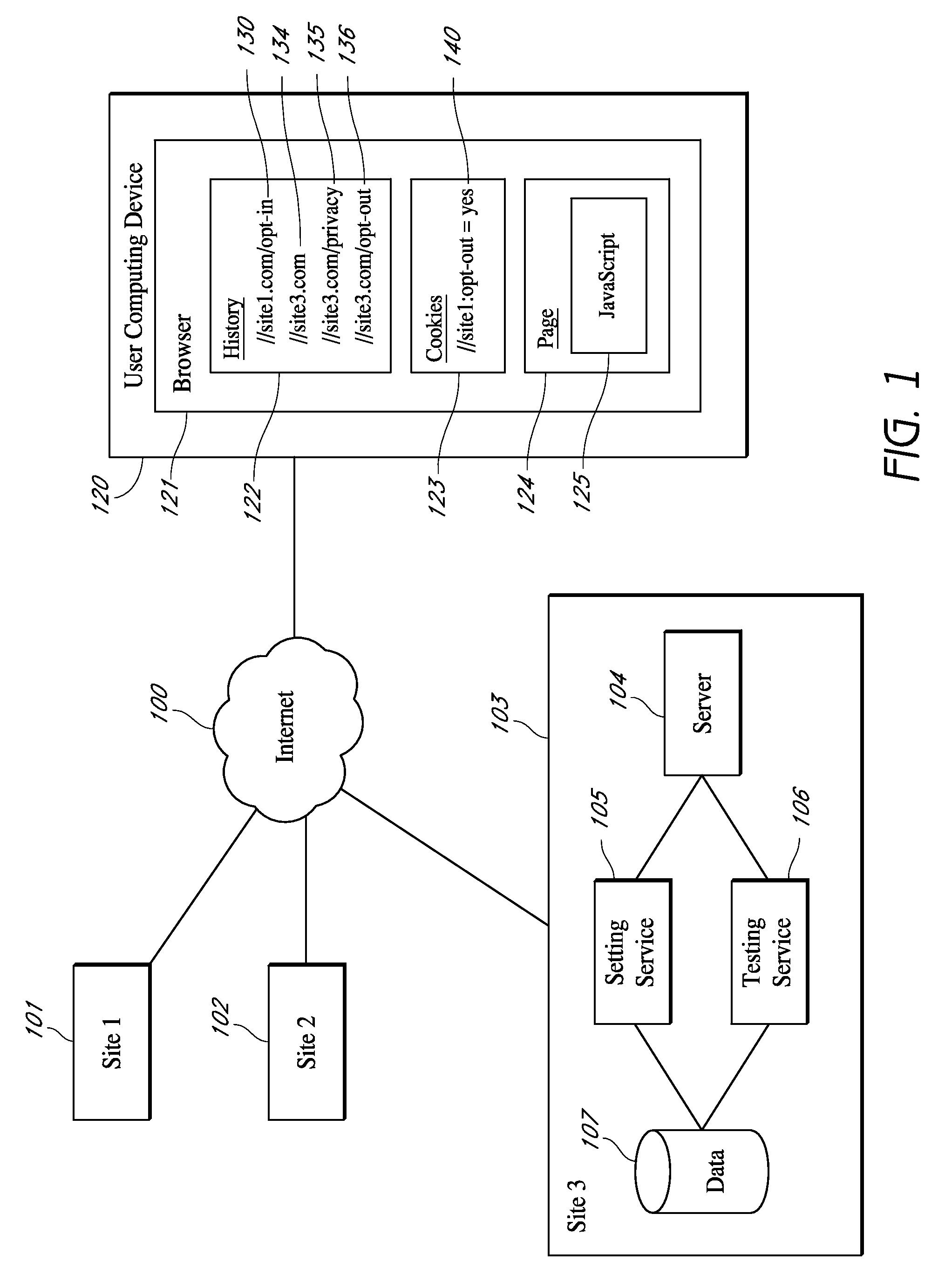History-based tracking of user preference settings
a user preference and history-based technology, applied in the field of historical data maintenance, can solve the problems of privacy management and security tools commonly deleting cookies, not well suited to enabling users, etc., and achieve the effect of a robust mechanism
- Summary
- Abstract
- Description
- Claims
- Application Information
AI Technical Summary
Benefits of technology
Problems solved by technology
Method used
Image
Examples
example use cases
4. Example Use Cases
[0056]Cross-Domain Opt-Outs
[0057]FIG. 2 illustrates an embodiment in accordance with cross-domain URI history detection and processing based thereon. Client 201 may be a user's computing device and browser or any device capable of communicating on a network. Service Provider A illustrates a web service provider acting as a generalized privacy policy provider. Web services generally include the provisioning of HTML pages, WL pages, RSS feeds, or generally any resource capable of transmission across a network. Service Provider B illustrates another web service provider, wherein Service Provider B is a provider that may normally be in a position to enforce or respond to privacy policy choices. Such providers include retail web sites, news sites, RSS feed syndicates, and so forth. For this example, Service Provider B is assumed to be on a different Internet domain (although the example still works for providers on the same domain). For purposes of the illustration sh...
PUM
 Login to View More
Login to View More Abstract
Description
Claims
Application Information
 Login to View More
Login to View More - R&D
- Intellectual Property
- Life Sciences
- Materials
- Tech Scout
- Unparalleled Data Quality
- Higher Quality Content
- 60% Fewer Hallucinations
Browse by: Latest US Patents, China's latest patents, Technical Efficacy Thesaurus, Application Domain, Technology Topic, Popular Technical Reports.
© 2025 PatSnap. All rights reserved.Legal|Privacy policy|Modern Slavery Act Transparency Statement|Sitemap|About US| Contact US: help@patsnap.com



